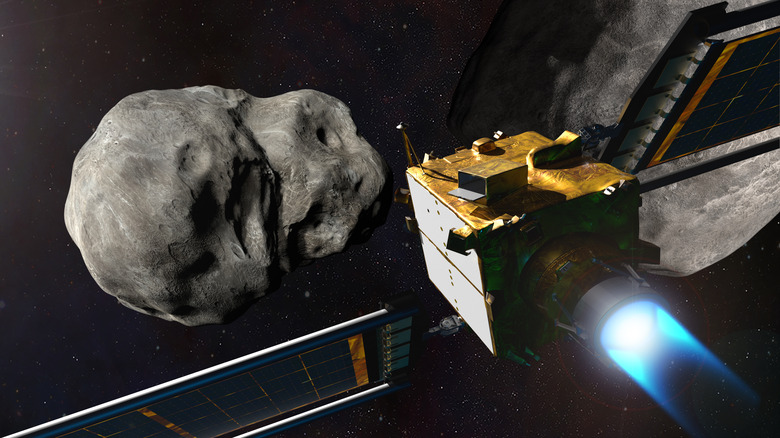Hubble Captured A Stunning Video Of NASA's DART Colliding With An Asteroid
NASA has released new video footage of DART's collision with an asteroid. The footage was taken back in September. NASA says the video was created using still images from the leadup and aftermath of the clash with the asteroid Dimorphos.
The Double Asteroid Redirection Test, or DART for short, was NASA's attempt to test a possible asteroid defense system that relies on slightly changing the asteroid's orbit. NASA deemed the collision a success back in September. What many might not have known, though, is that Hubble was watching the entire time.
The result is a new video of DART collision, which NASA shared at the start of March. Images in the video start 1.3 hours before the impact. From there, the images showcased in the video show the post-impact scene roughly two hours after the DART collision.
The video is showcased on Hubble's website.
The result of the DART collision is a tail of debris jutting into space, flying away from Dimorphos faster than four miles per hour. That might not seem fast, but it was enough for the material to escape Dimorphos' gravitational pull.
Following the clash, the asteroid continued along its new orbit, with NASA reporting a small change, though it was reportedly more significant than they had initially expected from the DART collision.
The success of this mission is a huge boon, though, as it shows that redirecting asteroids and other cosmic bodies like them could be possible. This is exceptionally useful if we find ourselves staring down the orbit of a planet-killer asteroid, as we could hopefully get a spacecraft in the air and recreate the DART collision in a way to change its orbit.
It will be interesting to see how NASA uses the data gathered from the clash to create additional defense methods for dealing with large asteroids. With so many unknown asteroids still lurking in space, defensive options like the DART collision could play a vital role in protecting our planet and future outposts on other planets.
